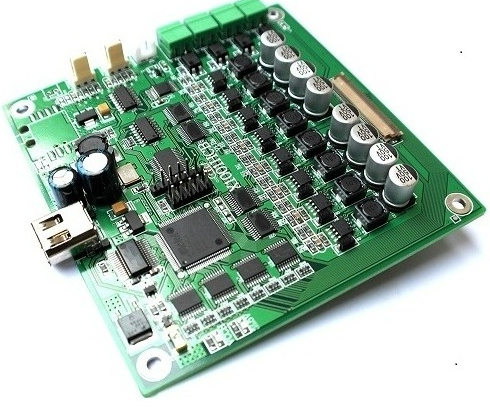1. The "little bang" theory
In wave soldering, tin bead spatter may occur on the soldering surface and component surface of the PCB. It is generally believed that if there is water vapor on the PCB before the PCB enters the wave crest, once it comes into contact with the crest solder, it will quickly vaporize into steam in a very short time during the process of intense heating, and an explosive exhaust process will occur. . It is this kind of violent exhaust that may cause small explosions inside the solder joints that are in the molten state, thereby prompting the solder particles to splash on the PCB to form tin beads when they leave the wave crest.
The source of PCB moisture before wave soldering has been studied and tested, and the conclusions are summarized as follows:
1) Manufacturing environment and PCB storage time
The manufacturing environment has a great influence on the welding quality of electronic assembly.

The humidity of the manufacturing environment is heavier, or the PCB packaging is unsealed for a long time before smt patch processing and wave soldering production, or PCB patch, inserting and placing for a period of time before wave soldering, these factors are very likely to cause The PCB produces tin beads during the wave soldering process.
If the humidity in the manufacturing environment is too high, moisture in the air floating in the product manufacturing process will easily condense on the surface of the PCB, causing condensation in the PCB through-holes. During wave soldering, the water in the through-holes will be preheated. After the temperature zone, the volatilization may not be completed completely. When these un-evaporated water droplets contact the solder of the wave peak, they will be vaporized into steam in a short time when they are exposed to high temperature, and this is when the solder joints are formed. Water vapor will create voids in the solder, or extrude the solder to produce solder balls. In severe cases, a burst point will be formed, and there will be tiny tin beads blown away around it.
If the PCB is unsealed for a long time before patching and wave soldering, water droplets will also condense in the through holes; after the PCB is placed for a period of time or after the insertion is completed, water droplets will also be condensed. For the same reason, these water droplets may cause tin beads to be produced during the wave soldering process.
Therefore, as a company engaged in smt patch processing, the requirements for the manufacturing environment and the timing of the product manufacturing process are particularly important. After the patch is completed, the PCB should be inserted and wave soldered within 24 hours. If the weather is sunny and dry, it can be completed within 48 hours.
2) PCB solder mask materials and production quality
The solder mask used in the PCB manufacturing process is also one of the causes of solder balls in wave soldering. Because the solder mask has a certain affinity with the flux, poor processing of the solder mask often causes the adhesion of tin beads and the formation of solder balls.
Poor manufacturing quality of PCB will also produce solder balls during wave soldering. If the plated layer of the PCB through hole wall is thin or there are gaps in the plated layer, the moisture attached to the PCB through hole will be heated to steam, and the water vapor will be discharged through the hole wall, and solder balls will be produced when it encounters solder. Therefore, it is very important to have a proper plating thickness in the through hole, and the minimum plating thickness on the hole wall should be 25μm.
When there are dirt or unclean substances in the PCB through-holes, the flux sprayed into the through-holes cannot be fully volatilized during wave soldering. Liquid flux, like water vapor, also produces tin beads when it encounters wave crests.
3) The correct choice of flux
There are many reasons for solder balls, but flux is one of the main reasons.
General low-solid, no-clean fluxes are easier to form solder balls, especially when dual-wave soldering is required for SMD components on the bottom. This is because these fluxes are not designed to be used under long-term heat. If the flux sprayed on the PCB has been used up after the first wave, then it has no flux after the second wave, so that it cannot play the role of the flux and help reduce solder balls. One of the main ways to reduce solder balls is the correct choice of flux. Choose a flux that can withstand heat for a longer period of time.